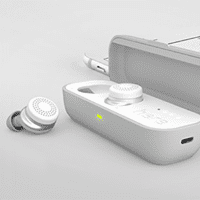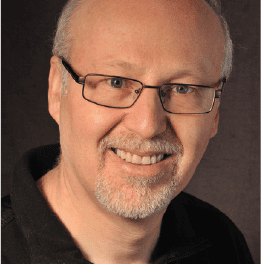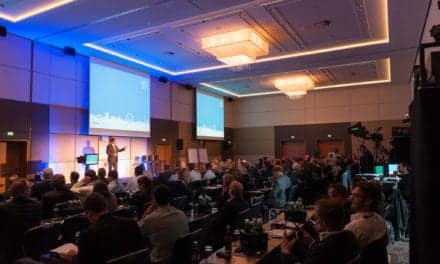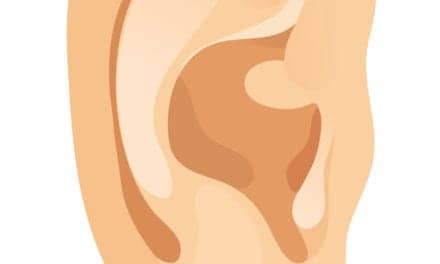Blog | November 2, 2017

“So what happened? To put it simply, over the past months, we took hundreds of meetings in an attempt to secure the necessary capital to continue running our business and build our next product – which would have been a true alternative to traditional hearing aids. However, we couldn’t find the needed capital to develop another complex hardware product.”
The mission of the 4-year-old company was to “build a computer for the ears.” Doppler was founded in 2013 and received several rave reviews for its DUBS acoustic filters and Here One smart earbuds. It really was an innovative product. However, even with its relative product strengths, it ultimately sold only 25,000 of its Here One devices, with 15,000 left still unsold in storage. As Doppler’s letter states:
“But we are sad to say that, despite our best efforts, we have reached a point where we have to wind down Doppler Labs. This is not because our vision of the future is not going to happen. We are actually more confident than ever that it will. Amazing hearing aids will be available at lower prices, and you will be able to tune them yourself. Tens of millions of people will be interacting with audio-based smart assistants, translating hundreds of languages instantaneously, and even going without their phones because smart earbuds will give them access to the people they love and the data they need. We wish we could have been the company to establish this future, but we know others will build on what we started, and we’ll be rooting them on.”
An excellent article by David Pierce in WIRED (November 1) looks at the rise and fall of Doppler Labs. From a hearing industry perspective, Doppler was also a strong and constant advocate for OTC hearing aid legislation, and the company’s KR Liu was a fixture at virtually all the PCAST, NASEM, FDA, and FTC workshops, as well as the recent ADA convention. Doppler saw great promise for OTC hearing devices opening up a new world of hearing help.
In his article, Pierce cites the well-known Silicon Valley gripe, “Hardware is hard” — meaning that the physical development, manufacturing, and distribution of an electronic product is rife with obstacles when compared to producing apps and software. No doubt. But you can also ask a lot of very smart, noble-minded, and gifted engineers and executives, hailing from companies as large and varied as Bausch & Lomb and RCA Labs (Songbird Medical), and they’ll tell you this: “Hearing is hard.”
For decades, we’ve ruminated about and wondered why more people don’t seek help for their hearing problems. The obstacles include cost/affordability and convenience/accessibility. But they certainly are not confined to these two factors (eg, see more from Sergei Kochkin’s MarkeTrak data). Hearing in noise, sound quality, stigma and cosmetics, reliability, battery life—and perceived value—are only some of the other factors. For example, Kochkin’s early MarkeTrak work suggested that if you tried to give away free invisible hearing aids, most consumers would not accept them if the devices didn’t help you hear well in noise. US hearing aid market penetration rates are not vastly different from those countries that provide hearing aids free of charge (see article by Amlani & Hosford-Dunn). A wide array of devices in the United States currently sell in the sub-$800 price category, ranging from low-cost professionally dispensed hearing aids to online PSAPs, many of which would suffice for a “starter hearing aid.” Not one appears to be upending the industry or causing consumers to blaze a path to dispensing offices, hearing device websites, or mass merchandisers.
Our market is simply a tough nut to crack, even as it lures companies with a siren call of what appears to be an “untapped market of 24 to 48 million desperate consumers” (eg, see Brent Edward’s 2006 article about how outsiders view our industry). However, after hundreds of millions of dollars spent in product development and consumer advertising by global hearing healthcare companies over the decades, one comes to this inevitable conclusion: Hearing is hard. —KES
Karl Strom is the editor of The Hearing Review.





True, hearing is hard and there is no hearable on the market yet that a person with a mild hearing loss (and no hearing aid) would put in their ear in for example a restaurant. The same person don´t have a problem of putting on a pair of reading glasses for reading the menu…So: will we see a version that really fills this gap in the market 2018?
Karl, I would agree with your assessment of the market, but I would disagree with your implied conclusion.
I agree that most of the newcomers to the industry are excessively motivated with the eye-watering street-prices of hearing devices and unaware of the difficulties in producing and dispensing such devices. The condition of a gold rush is not the best one for producing an elaborate innovation.
What for me explains the failure of the ‘disrupters’, including Doppler’s, is that they predominantly concentrated on making products cheaper¬—instead of addressing the real needs of non-adopters. ‘Untapped marked’ was also untapped in terms of money, not in terms of needs that are not served yet.
The category of so-called hearables is another example of this behavior: to my knowledge, those devices seldom provide any signal processing for hearing loss compensation, nor any novel way of fitting. The questionable advantages that they have compared with traditional hearing aids (streaming music and applying sound effects to an environment) are more than offset with the disadvantages of their bulky form-factor and short battery life. Contrary to the repeated claims I never saw Doppler competing in hearing healthcare market. Doppler’s failure is therefore not a proof of market inertness.
Your final statement that ‘the market is a tough nut to crack’ seems plausible when we look at the failed attempts in the past. But it should not be understood in a way that the nut will not be cracked soon. In all of the failed attempts the technology played a minor role, the business ideas were focused on financial bottom line and all but ignorant of the needs of non-adopters.
In the end, Doppler might indeed contribute to the change in the industry: not as a disrupter – but as an example how not to do it.
Thank you Tarik. I didn’t mean to imply that our market will NEVER be cracked or disrupted by new and/or advanced technology. It just hasn’t happened to a major extent yet, and I wish I had a quarter for every time someone told me (in so many words) that our Podunk hearing aid and acoustic engineers didn’t know anything and their new company was about to eat the industry’s lunch. But, without question, there HAVE been many “disruptive technologies,” particularly within the hearing industry itself in the 20 years that I’ve been an observer–from WDRC to wireless innovations. For example, one can view the advent of the RIC and open-fit technology as being completely transformative to the field (eg,see the opinion piece “The RIC as a Disruptive Technology”). And, of course, your company is playing a role in new processing strategies and contributions to telecare. My guess is that someday soon we WILL see a really killer solution for hearing in noise beyond super-directional/boom-type microphones which work well but have a high “nerd factor” in terms of cosmetics, or some other technology that utilizes a “noise sampling/canceling” strategies, voice recognition, etc. Teleaudiology and 3D imprints of the ear canal are just finding their ground. And, yes, many of the companies that have been shipwrecked on the rocks have also had some fatal technical flaws (eg, Songbird) or just not really “gotten it” in terms of who the hearing-impaired consumer is (particularly in the tricky and younger mild loss segment) and what they’re really looking for. So I think we basically agree. Thanks again for your comment.
When asked on the Brain Series with Charlie Rose why people don’t address their hearing loss, Ruth Bentler, PhD, of the University of Iowa, said that she believes vanity and financial constraints are secondary motives (https://charlierose.com/videos/17843). The overriding reason, Dr. Bentler said, is that hearing aids fail them in the challenging environments that cause the most distress.
People who seek hearing aids foremost, want them to help in background noise and in adverse listening environments with poor acoustics. Induction hearing loops do this beautifully in large public venues, houses of worship and theaters. Until the industry works collectively to double the utility of hearing devices and resolve the difficult hearing situations by working to foster hearing loops (and other effective assistive listening systems) around the country, many consumers will continue reject hearing aids as predicted by Dr. Kochkin http://journals.lww.com/thehearingjournal/Citation/2007/11000/Increasing_hearing_aid_adoption_through_multiple.6.aspx